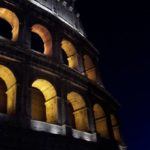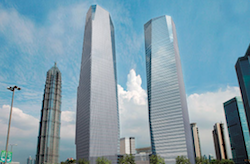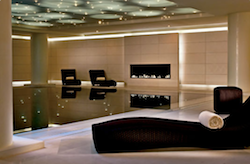Show & Tell
Wednesday, August 11th, 2010As camera-tooting visitors to Cambodia are drawn to the soaring temple of Angkor, the world’s top photo journalists pass on their craft to the next generation.
Written by Ron Gluckman Photos by Erik Almas
The 19th-century French naturalist Henri Mouhot was among the first explorers in the modern era to marvel at the majestic temples of the ancient Khmer empire (802–1431), some of which he found crumbling beneath a dense canopy of banyan trees and tropical vines in northern Cambodia. Mouhot is credited with discovering Angkor, which 900 years ago may have been inhabited by half a million people.
Of course the 1,160-square-mile Angkor, which contains more than 90 major temples and other buildings, was never totally lost, and several Europeans carved paths to the remote shrines before Mouhot. Yet the young French explorer did much to popularize what is widely regarded as an ancient world wonder.
In recent years, millions of travelers have followed in Mouhot’s footsteps, cameras in hand to shoot Angkor Wat at sunset, touring temples, libraries, and fields still sustained by 900-year-old moats. Visitors still travel on the very same stone roads and bridges that once linked this Khmer capital to an empire that stretched to Myanmar, Vietnam, and Thailand.
Many fly directly to the international airport in nearby Siem Reap, a riverside town featuring fine Cambodian cuisine, which is often likened to Thai food but tends to be more sour than spicy. Scores of restaurants like Abacus Café and Madame Butterfly, set in renovated traditional wooden houses, have revived traditional recipes, as well as concocted daring Khmer fusion dishes.
Siem Reap also lays claim to considerable sophistication, evidenced by the presence of the 24-suite Amansara, a member of Amanresorts. Fashioned from King Norodom Sihanouk’s guesthouse, Amansara features a spa and one of the chain’s signature slate-surfaced pools.
Siem Reap has emerged as a bustling regional arts center. A dozen local galleries have created art walks. Free guides to the various walks are available from the McDermott Gallery, run by John McDermott, a local photographer regarded as the Ansel Adams of Angkor.
Picking out the star photographer from the crowds at the Angkor Photography Festival, held amid the locale’s ancient temples, is surprisingly easy. The six-foot, five-inch Gary Knight would stand out in any crowd. Famous for his fearless coverage of the world’s worst conflicts, from Bosnia to Darfur, Knight helped found the festival.
The event was born in 2004, during a reunion of photographers who covered the decades of fighting in Cambodia dating back to the Vietnam War. “What really sets this festival apart is its noble spirit, its unique outreach,” says Roland Eng, a festival director. “It’s not just about photography and arts, but about humanity and compassion. This is like a gathering of old friends, all coming together to help Cambodia.”
For scores of young photographers like Bangkok’s Satirat Dam-ampai, the Angkor Photography Festival offers them the rare chance to mingle with and be mentored by their idols. “I came here because these are legends, and you can learn so much from them,” she says.
Growth of Siem Reap has come only in the last decade or so, according to Richard Yap, former manager of the Raffles Grand Hotel d’Angkor, a dazzling colonial-era property that played host to the early temple explorers of the 1930s. “The airport opened in 1997,” he recalls, “and it really took off.” Convenient to Angkor are more ruins, which are mostly blanketed in jungle.
Tom Marchant, the founder of travel website Black Tomato, can organize a four-day itinerary that includes a sunrise tour of Angkor Wat; micro-lighting (motorized hang gliding) over the jungle; and a tour of Koh Ker, an ancient Khmer capital, that ends with an overnight stay in a private camp.
Didier Faraud, who has been a fixture in Cambodia since 1993, runs Siem Reap’s idyllic Heritage Suites Hotel, as well as Heritage Adventures. “Angkor is a magical destination that can be as luxurious or rustic as anyone desires,” he says. “Most visitors want to do something no one has ever done.”
That’s exactly what Knight wanted to accomplish when he first gathered here with some cherished colleagues: to experience something rare and distinctive in a mystical place, which is still as mystical as the site Mouhot came upon a century ago.
FOR MORE INFORMATION
> Angkor Photography Festival
> Amansara resort
> Raffles Grand Hotel d’Angkor
> Heritage Suites Hotel
> Abacus Café
> Madame Butterfly
> Heritage Adventures
This guest post was orignally published in Lexus Magazine.
Possibly related posts:













































